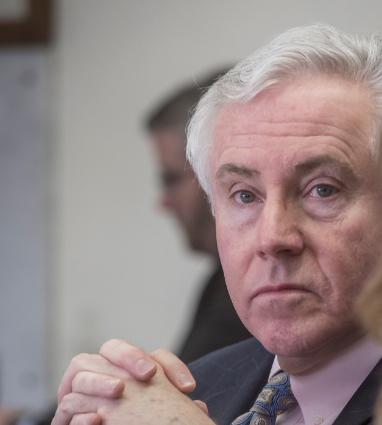PROVIDENCE – Despite growing $686 million in fiscal 2017, the financial health of the state’s retirement system by some measures has declined in recent years, marking a trend state officials hope will reverse in coming years because of new policies.
The R.I. Auditor General on Friday released an annual audit of the retirement system, known formally as the Employees’ Retirement System of the State of Rhode Island, or ERSRI. The audit shows the overall system grew $686 million to $8.8 billion for the fiscal year ended June 30, 2017.
But the system’s two largest pension plans, belonging to state employees and teachers, required taxpayers to pay nearly $25 million more into the plans than in the prior fiscal year. And the funded ratio – a measure of assets to liabilities often used to determine a plan’s fiscal health – has declined for both plans each of the last four fiscal years.
The funded ratio for the state employees’ plan fell to 51.8 percent in fiscal 2017 from 51.9 percent a year earlier and 58.6 percent in fiscal 2014. The teachers’ plan, meanwhile, fell to 54 percent from 54.1 percent and 61.4 percent in fiscal 2014.
“Obviously, everyone is looking for the funding measure to increase, but there are a lot of moving parts here,” said R.I. Auditor General Dennis E. Hoyle.
The state’s top number cruncher pointed to a few contributing factors, including the State Retirement Board adopting – among other things – a more conservative assumed rate of return last year. The board lowered the assumed rate of return to 7 percent from 7.5 percent.
The change added $318.9 million in liabilities to the teacher’s plan and another $235.5 million to the state employees’ plan. Both increases impacted the funded ratio, according to the audit.
Seth Magaziner, the state’s general treasurer who heads the retirement system, acknowledged the funded ratios needed work. But he pointed to improved cash flow, a more realistic assumed rate of return and consistent year-over-year funding as signs of improving financial health.
“The system is getting healthier,” he said.
The funding has also benefited recently from strong investment income. The state pension fund last fiscal year reported an 11.6 percent return and earned $851.4 million, marking its best performance since 2014. The fund value – net benefits and fees – grew 6.7 percent to $8 billion. It has continued to perform well, growing to $8.4 billion as of Dec. 31.
“In any given year, one of the biggest drivers of the funded ratio is going to be that year’s investment return,” Magaziner said. “Ten years from now the funded status will be higher. Five years it might be as well. What happens in any individual year largely depends on the financial markets.”
The treasurer’s actuaries issue a separate report based on actuarial calculations (making them look slightly different from the auditor general’s audit), and project the teachers’ plan funded ratio should start improving relative to this year beginning in 2021. The state employees’ plan, meanwhile, is expected to begin improving relative to this year beginning in 2020.
“While in the short term adopting more conservative assumptions make the funding status look lower … it sets it up to be healthier over the long run,” Magaziner said. “We knew when we lowered the assumed rate of return that we’d be having a lot of these conversations.”
Eli Sherman is a PBN staff writer. Email him at Sherman@PBN.com, or follow him on Twitter @Eli_Sherman.













